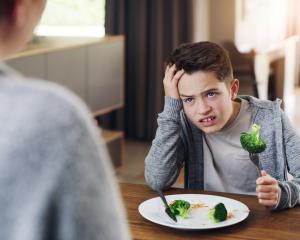

Subsequent studies, such as those undertaken by My Food Bag in 2018, come up with similar conclusions.
Anne Fishel, a Harvard University professor, family therapist and co-founder of the Family Dinner Project, writes about how she often feels like telling families to go home and have a meal together rather than spending an hour in therapy with her.
She says that the evidence is compelling: dinnertime conversation improves youngsters’ vocabulary better than being read to; regular mealtimes are a better predictor of high achievement scores than the amount of time spent in school and doing homework; and children who eat family meals tend to eat more fruit and vegetables and consume less junk food and soft drinks.
Is it a family dinner if there’s only one parent present or it’s a takeaway? Fishel says two family members eating together, experiencing connection, with the television off and gadgets elsewhere, is a family dinner, home-cooked or otherwise.
"The mental health and academic benefits in particular flow from what happens at the table once the food arrives. If the atmosphere is warm and welcoming, if children are encouraged to talk and then feel that what they have to say is worth listening to, this is what matters."
Even one positive meal a week that the family looks forward to, where everyone pitches in to cook, clean up and talk at the table has benefit.
This meal doesn’t just need to be dinner, either. Breakfast, weekend lunches and bedtime snacks taken together all count.
Preparing the meal can be shared or rostered once the children become old enough. Teenagers could be responsible for a whole meal. Youngsters can set the table, peel the potatoes, stir the sauce and help with the dishes. These activities create other opportunities for social interaction.
Jamie Oliver, in his campaign to improve school dinners, showed that youngsters who help prepare the food also tend to eat it. Let them nibble the raw vegetables as they go. It doesn’t matter if some gets eaten before the meal.
Keep the dining atmosphere friendly and comfortable and the conversation light and unforced — it isn’t a time for lectures and grillings and there doesn’t have to be non-stop chatter. And you can still have an occasional pizza meal in front of the television as a special treat.












